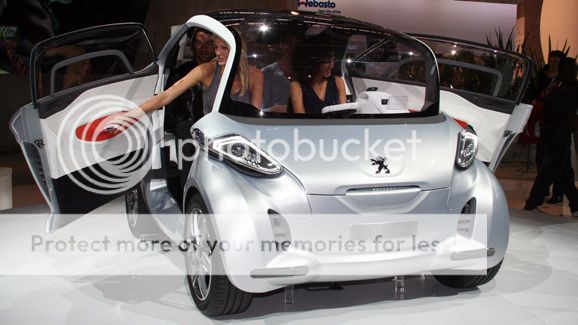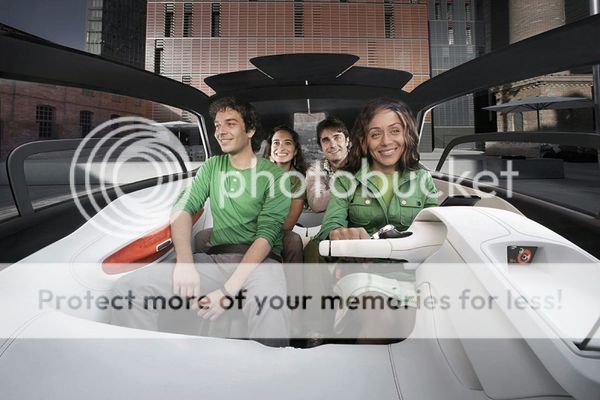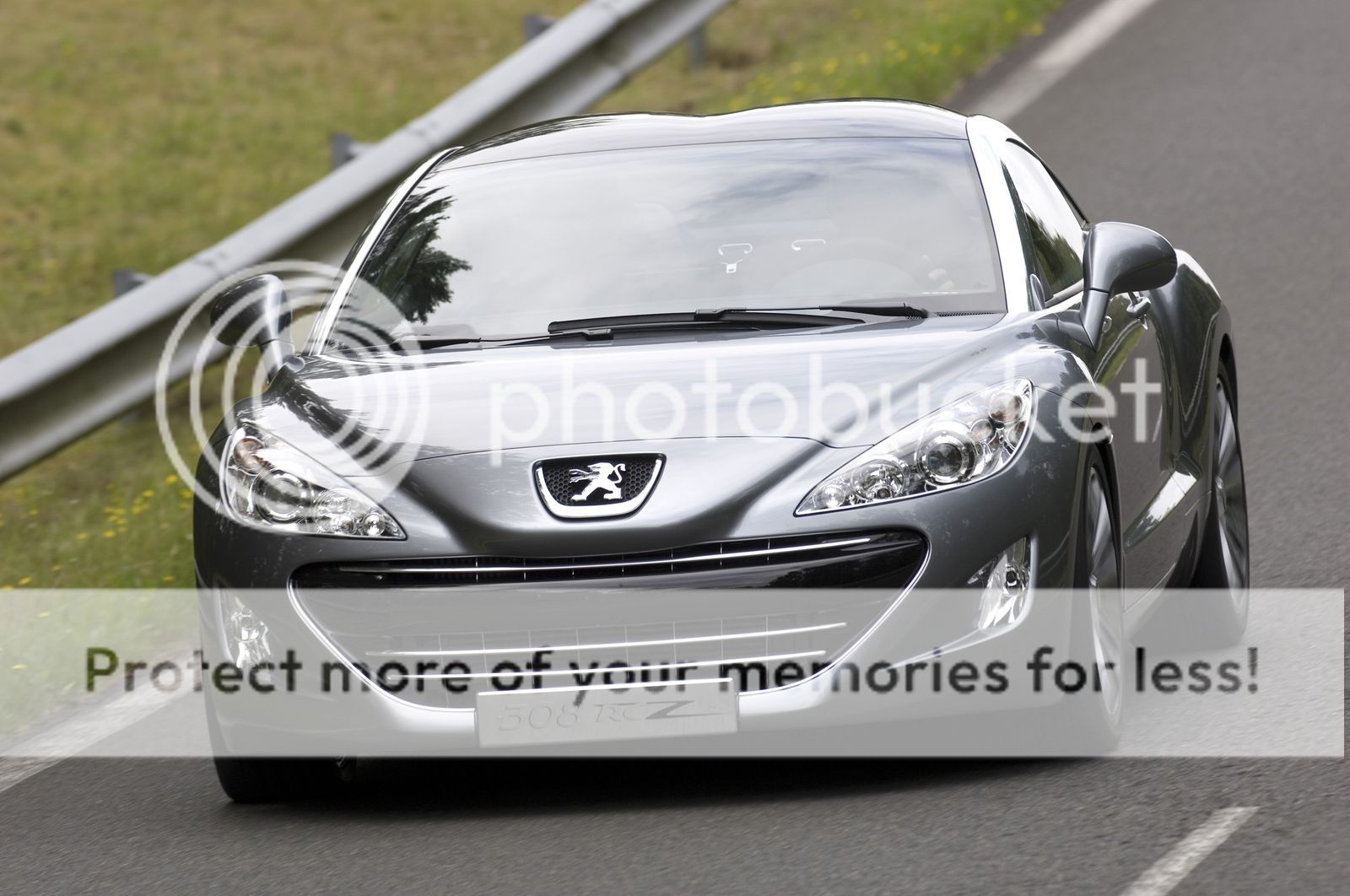always have been making strange cars. The latest concept is BB1, which is 2.5 metres four-seater. The main target is a range of 75 miles only on electricity, which makes the
and entirely ECO-friendly car. It is fitted with two electric motors mounted in the rear wheels, with maximum power of 7.5kW each (20hp totally).
Recently a lot of manufacturers are developing engines with less fuel consumption and less harmful emissions, but these are petrol and diesel hybrids, not full
electric cars. This make sense, because the maximum range is like a petrol or diesel powered car or even greater and you have enough power, when you need it. Still the electric powered cars are weigh behind the functionality of regular cars.
Hopefully the
BB1 will remain only a concept.
With its BB1 concept car,
Peugeot has pushed back the conventions and boundaries of current automobile manufacturing to create a totally new solution to the current and future needs of urban mobility. Capable of seating four people in a vehicle just 2.5 metres long, the
BB1 concept car is a full electric vehicle that reinvents the automobile in every way: architecture, style, interior design, interior space, connectivity – while all the time respecting the environment.
The world is always on the move and urban traffic levels are forever increasing. Everyone wants to save time, but the protection of the environment is an ever increasing priority. To meet these ever changing needs,
Peugeot has developed a range of mobility options across all of its many product offerings. Depending on age and individual needs, everyone can find a suitable solution in
Peugeot’slion-branded range of bikes, motorbikes and automobiles.
Peugeotare, however, constantly studying and sharing mobility ideas within all the different sister companies to pool their expertise and their creativity to create particularly innovative and original projects. Indeed,
Peugeothas always sought to be a global, recognized provider of mobility, with an inventive, responsible and competitive range of vehicles, whether they are on two, three or four wheels. The
BB1 concept car, unveiled at the 63rd
Frankfurt Motor Show, paves the way for this ideal by pushing back the barriers to bring an innovative, fun, expressive and stylish vehicle. This electric vehicle aims to explore new grounds with regards to urban mobility.
A totally original ideaThe design brief for the
BB1 was to meet the mobility needs of everyday individuals on a daily basis and provide maximum versatility, a compact size, manoeuvrability (3.5m turning circle) and good performance levels. To achieve all this, the
Peugeot teams faced a real challenge – never before in the history of the automobile has a car been created to accommodate four people in an overall length of just 2.5m. This amazing use of interior space can also be adapted to increase the potential load capacity, even though its “compact” size gives it the ability to park in extremely tight spots – even perpendicular to the pavement.
To meet this challenge, the design of the structure of the passenger compartment has drawn inspiration from two-wheeled vehicles in terms of the ergonomics and controls. The driver controls the vehicle by adopting a novel driving position – more vertical than is usual. This is mainly made possible through the absence of foot pedals, as in a conventional car. Access to the vehicle is through the reverse opening doors, while the load area access is through an innovative tail board / tailgate design. The interior can be transformed as required to offer a load volume of up to 160 litres (with four occupants), or 855 litres (with just one person in the car).
A stylish break with the pastThe style of the vehicle highlights the interior space and the unique driving position. With its bold styling lines at the front, large glazed surface area, low door waistline (for the passenger compartment ventilation system) and extended wheel arches, the car represents a real move away from current vehicle design.
Robust and protective, the quality and technology shine through in every detail, such as the “full LED” front headlights and rear view cameras. The double bubble roof, similar to the RCZ, helps with the feeling of space within the vehicle, as does the openness and brightness created by the large glazed surface areas.
User-friendly connectivityThe
BB1 includes an extensive range of interactive technologies. The colour multi-function display and the vehicle’s audio system provide the ideal link for all the functionalities of a “smart phone”: telephone, navigation, Internet access, radio, MP3… Just connect the device to the USB connector and the 12V power socket if necessary.
Universal and user-friendly, this system enables the
BB1 to provide a range of essential services without the need for multiple pieces of equipment, bringing extra safety to driving and saving considerable weight. Similarly, the rear-view cameras remove the need for mirrors, optimising the width of the vehicle and improving its aerodynamics, while adding to the high-tech feeling of the interior.
An environmentally-efficient vehicle…Creative – the
BB1 breaks new ground with its electric drive system. It is fitted with two electric motors mounted in the rear wheels, designed in association with Michelin. This original set-up maximises the interior space and draws its inspiration from the world of the quad bike. They produce a maximum power output of 15 kW (20hp) – or 7.5 kW per motor, proving the optimum power to weight ratio for the vehicle in its urban driving environment. This ensures the best possible response at start-up (0 to 19 mph in 2.8 seconds) and excellent in-gear acceleration (19 – 37 mph in 4 seconds), ensuring driveability and safety are to the levels expected of a
Peugeot.
The power for the vehicle is provided by two lithium-ion battery packs supplying energy to the respective electric motors located under the right and left-hand rear seats, with a comfortable range of 75 miles. This layout avoids any reduction in the interior space or the available storage space. Furthermore, this location between the front and rear wheels helps with the weight distribution of the vehicle and benefits vehicle stability, especially during braking.
Innovative light-weight structure…Peugeot engineers have completely reinvented the way to design a vehicle. The
BB1 uses a tubular chassis designed by
Peugeot Motorcycles. It still, however, includes all normal “car” dynamic systems: electric power steering, suspension (double-wishbone front and rear suspension), friction damper spring assemblies – granting the vehicle a level of road-holding to match the vehicle’s performance, its urban nature and driveability and safety levels worthy of the
Peugeot Marque.
The body is made up of a very light carbon fibre structure, designed to wrap around the passenger compartment, all of which enables potential future customisation and a possibility of a variety of vehicle shapes. Finally, the vehicle weight does not exceed 600 kg, including the batteries, enabling all its mechanical parts to be placed in their ideal position, ensuring optimal weight distribution.
An environmentally-friendly conceptThanks to its electric propulsion, the
BB1 is an environmentally-friendly vehicle par excellence and emits no loud noise outside the vehicle and, above all, no pollutant emissions owing to the fact that it consumes no fossil fuels.
But this eco-responsibility isn’t limited to just driving. At a standstill, the passenger compartment ventilation keeps operating in daylight thanks to the solar panels placed on the roof of the vehicle. This enables two functions: pre-ventilation of the interior and the trapping of pollutants and ultra-fine dust particles (μm), due to the use of high-performance filters and activated carbon.
The use of new generation solar cellsThe
BB1’s solar panels use cutting-edge technology, designed in partnership with the Ocean Vital foundation. Flexible (enabling their usage on surfaces as complex as the dual-bubble roof of the
BB1), they provide a high yield of around 16% of energy captured (a much higher performance than current systems) to power some of the vehicle’s systems.
The Ocean Vital Foundation, created by round-the-world navigator Raphaël Dinelli, develops new clean technologies with the aim of preserving our natural resources and environment. As part of the BB1 project,
Peugeot and Ocean Vital have entered into an agreement to support research and development into new renewable energy technology and, therefore, encourage the development of research projects and the “green economy” in France.
The story continues…The name “
B1″ isn’t only a reference to
Peugeot’s history and the
“Baby Peugeot” models of 1905 and 1912. This ultra-compact, lightweight electric vehicle concept is also something of a throwback to the
Peugeot VLV. Three hundred and seventy seven of these were built between 1941 and 1945, meeting the then special needs of users throughout the Second World War. All this stands as proof that
Peugeot has always been able to create and adapt its mobility options to a particular time and need.
Peugeot BB1 – Zero Emission Car Peugeot BB1 – Zero Emission Car
Peugeot BB1 – Zero Emission Car Peugeot BB1 – Zero Emission Car
Peugeot BB1 – Zero Emission Car Peugeot BB1 – Zero Emission Car
Peugeot BB1 – Zero Emission Car Peugeot BB1 – Zero Emission Car
Peugeot BB1 – Zero Emission Car Car News, Car Review, Future, Auto, New Cars, Car Quote, Price
Car News, Car Review, Future, Auto, New Cars, Car Quote, Price











































